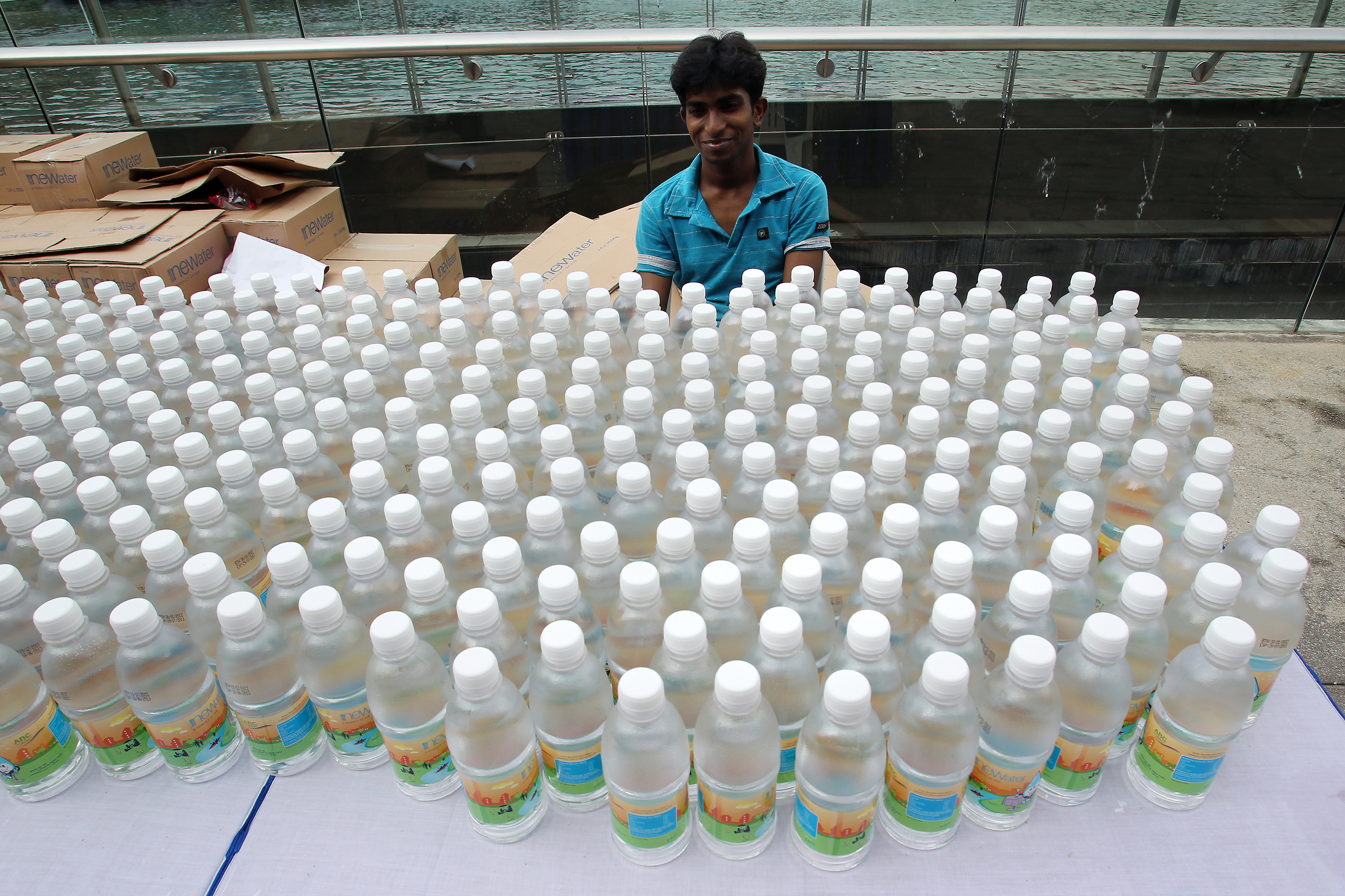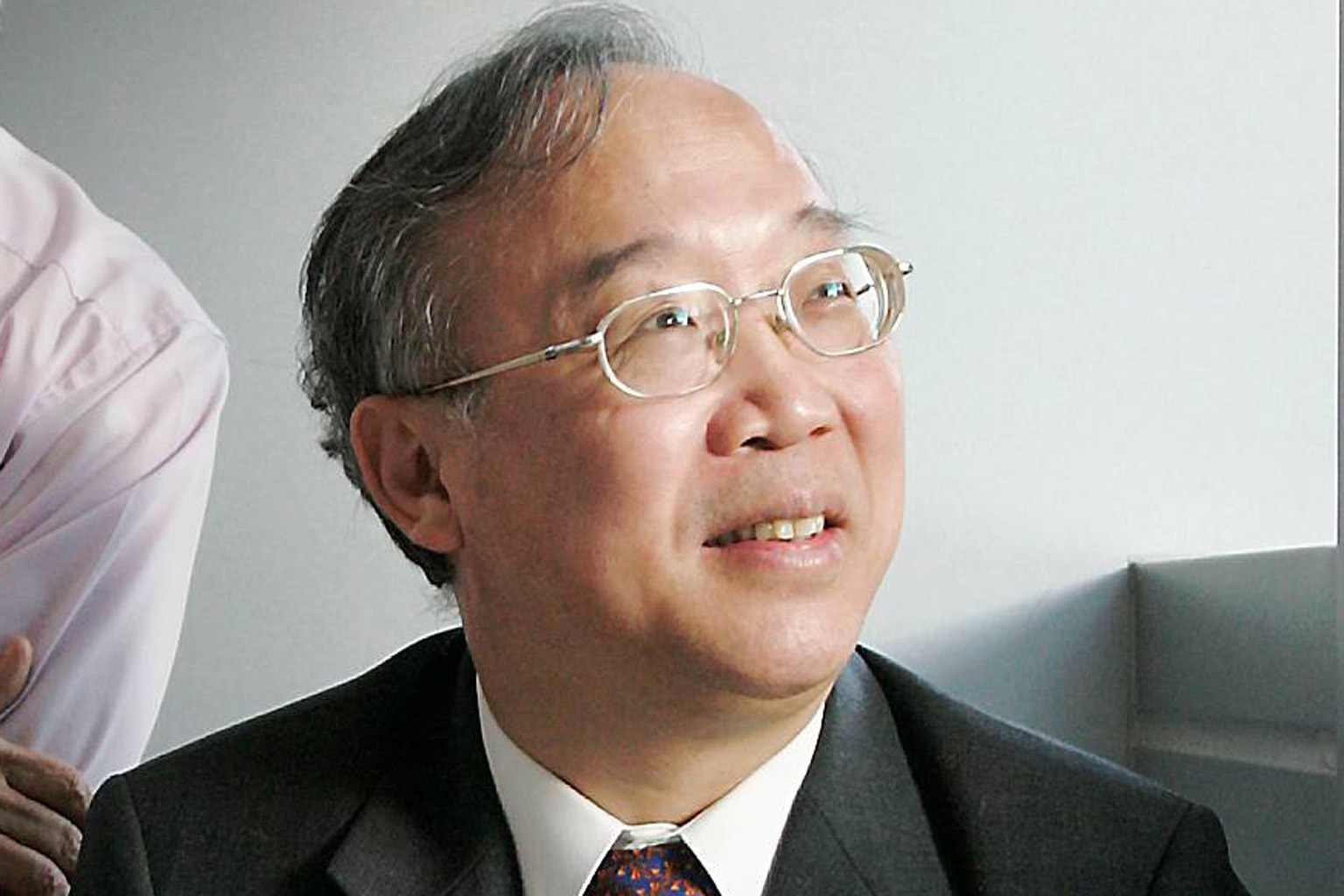What's next after Newater
A world of possibilities beckons as leading scientist and his team work on ways to put membrane technology to use
Sign up now: Get ST's newsletters delivered to your inbox
Follow topic:
When I first heard how Newater was produced years ago, it blew my mind.
The idea seemed simple enough: Use a membrane to separate the water from all that other horrid, smelly stuff.
But how do you make a sieve that's so precise and dependable you could drink the water that had just been separated from sewage?
Welcome to the incredible world of membrane technology.
It works because the filter does the job at the molecular level, separating actual particles of water from the rest.
It is as though there is a sentry at the gate checking on who can pass through.
But there's much more to this science than water purification and I am here at the National University of Singapore (NUS) to find out from Professor Neal Chung Tai-Shung, who is one of the world's leading scientists in the field.
He heads a 41-strong team at the Department of Chemical and Biomedical Engineering at NUS, and I am having a hard time trying to understand all the different ways the technology is being put to use, some of which sounds like science fiction.

Here's one of them: At the mouth of a river flowing into the sea, if you placed a membrane to separate the two bodies of water, you could harness the energy as the water molecules from the seawater passes through the sieve to join the fresh water on the river side.
It is called osmotic pressure but I would never have known it was strong enough to drive power-generating turbines to produce electricity.

The idea was tried in a Norwegian experiment but failed as the river water wasn't clean enough.
The NUS team is trying to perfect the technique in the lab.
Here's another: Use the membrane to convert waste from agricultural products into fuel like biomethanol and bioethanol, which are by-products of the decomposing waste. The molecular sieve separates the fuel-generating gases from the rest, to be used for power stations and motor vehicles.
How about using membrane technology in kidney dialysis machines, to cleanse blood and rid it of toxic waste?
In fact, all living cells are made of membranes that do all sorts of things to keep us alive.
Scientists like Prof Chung are only trying to create artificially what nature had provided in abundance for millions of years.
There is one application which isn't life-and-death but about finding a better perfume spray.
The idea is to have as fine a mist as possible without wasting the fragrant liquid all over you.
Smells simple enough, and Prof Chung's team is working on one that will do the trick.
Much of the research in these four areas is about making the membranes, a highly intricate process requiring years of knowledge and experimentation.
-
About membrane technology
INTRICATE PROCESS
Membrane technology is about separating different liquids or gases as they pass through a membrane, allowing particles of a certain size to go through and not the others.
Membrane technology is about separating different liquids or gases as they pass through a membrane, allowing particles of a certain size to go through and not the others.
The engineering is as important as the science because manufacturing the right membrane is an intricate process requiring much knowledge and experimentation. The right material, the shape of the membrane, the temperature and many other factors need to be just right to produce the desired results.
WHY IT IS IMPORTANT FOR SINGAPORE
Membrane technology is used extensively in water purification and desalination plants, with Newater being the best-known example.
Membrane technology is used extensively in water purification and desalination plants, with Newater being the best-known example.
Singapore wants to be a world leader in water technology to increase its water supply and be self-sufficient. There is also worldwide demand for clean water and there are shortages in many places.
Membranes are also used in the production of renewable energy, in kidney dialysis machines, and for many other medical uses.
There are now more than 180 local and international water companies and 26 institutions working on water research in Singapore.
The engineering involved in manufacturing them is as important as the science.
I see how it is done when I visit four of his labs at NUS, briefed at each stop by one of his PhD students.
They are young, mostly female and mainly from China.
Gao Jie is from Xinjiang, Xu Yiming from Liaoning and Lu Kangjia from Henan.
When they are in the labs with their co-workers, you might think you are in China as they speak Mandarin and almost everyone I meet is Chinese.
There are 13 researchers from China. The rest are from Singapore, Taiwan, Iran and Indonesia.
It is a pity more local students are not taking up the study, given how relevant this science is to Singapore which wants to become self-sufficient in meeting its water needs.
There are also rich possibilities for collaboration with industry because drinking water is in demand everywhere and there are shortages in many places.
Indeed, Prof Chung spent four years working with Hyflux, a leading water treatment company, to develop a membrane that is now used in desalination plants worldwide.
His work is part of Singapore's effort to become a world leader in membrane and water research.
Spearheading it is the national water agency, PUB, and the Environment and Water Industry Programme Office set up by the National Research Foundation in 2006.
As a result, there are now more than 180 local and international water companies and 26 research institutions here.
But it is researchers like Prof Chung who laid the foundation in this field.
Originally from Taiwan, he came to Singapore 21 years ago after working in the US as a research engineer because it is "more stable" and he didn't like the politics in his home country then.
When I first visited him at his office, I was struck by how small it was, filled with shelves of books and assorted old furniture.
There was not much space for me, so we had to meet in another room.
"It's more comfortable here," he says.
He is clearly not someone attracted to the glamour of the job or the furnishing in his office, even though he is one of the world's top scientists in the field.
"I work seven days a week," he tells me.
"And I tell all my students, if you join my team, you have to work on Saturdays."
A good professor has to work as hard as his students to keep up his learning, he says.
His approach to life and the science he specialises in has led to success for him individually as well as the institution he works in.
In 2014, he received the Underwood Medal from the UK-based Institution of Chemical Engineers, and last year, he won the President's Technology Award.
A study by Lux Research, an independent research company, ranked NUS the world's top university in water and membrane research, beating those from the Netherlands and the US.
As Singapore develops its research capabilities, it has to continually look for top scientists who are not just leaders in their fields but also team builders able to train a younger generation.
It's not just about the science but a way of teaching and study.
Prof Chung has managed to get both right.
- This is an occasional series by the writer on science and technology in Singapore.

